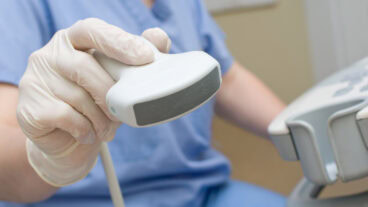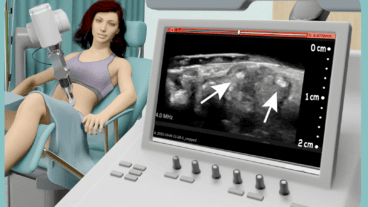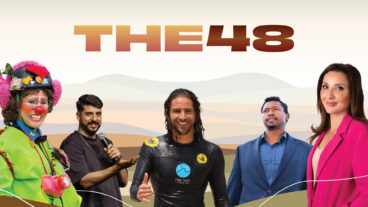Fleet drivers are twice as likely to be involved in accidents as normal drivers – DriveDiagnostics CEO Hod Fleishman.Some 40,000 Americans are killed every year in traffic accidents. While a fatal accident is the worst consequence of bad driving, it is not the only cost.
Companies with fleets of cars or vans spend millions of dollars every year just on minor repairs caused by accidents. Now, an Israeli company has developed technology to diagnose bad driving – and help companies do something about it.
“Fleet drivers are twice as likely to be involved in accidents as normal drivers,” says Hod Fleishman, CEO of Israeli start-up DriveDiagnostics which is shortly moving its headquarters to Jerusalem.
A fleet with over 500 cars – which could be a utility company’s vans or a corporation that gives its employees cars as a perk – can expect to have “fifty percent of the cars involved in ‘bent wheel’ incidents per year,” Fleishman told ISRAEL21c, explaining that these are not serious accidents, but ones that cost “at least $1000 per crash,” a number which adds up.
“We met companies that have 500-car fleets that are paying more than one million dollars a year [on repairs].” Then there are the indirect costs caused when the vehicle is in the garage and unavailable, such as insurance, employee compensation and third party claims.
Trying to reduce these costs is not easy. Companies could install a speed-measuring device to catch employees speeding, but that doesn’t spot the drivers who are simply not paying attention to the road, or driving aggressively and braking too often, which increases wear and tear on the vehicle and uses more gas.
This also doesn’t tell an employer about the employee’s seventeen-year-old son who just got his license and takes the car on Friday nights to drive around with his friends.
DriveDiagnostics’ solution is SafetyCenter, a small stand-alone black-box device which sits on the car’s dashboard unconnected to any of the car’s systems, avoiding the need for any kind of installation or integration. SafetyCenter’s sensors monitor every move the vehicle makes by measuring the forces on the car.
The system also has a GPS location device which is used to measure the speed at which the car is being driven, rather than connecting up to the car’s own speedometer. Different combinations of forces correspond to different maneuvers, such as braking sharply, swerving round a corner, overtaking and attempting to change lanes but failing.
SafetyCenter’s software examines every move and identifies it as one of a hundred or so different maneuvers in its database. A journey’s worth of maneuvers adds up to a profile of the driver. “A good driver executes around twenty maneuvers in ten hours,” says Fleishman. “A bad driver can make up to thirty aggressive or dangerous maneuvers in thirty minutes.”
The software produces a report of the driving behavior listing each maneuver, and also displays a set of journeys graphically, coloring each maneuver on the graph green, yellow or red corresponding to safe, fairly dangerous and dangerous driving.
A quick look at a driver’s graph gives an instant impression of what kind of driver this is. The system also takes into account the time of day the driving took place to see if that has an effect on bad driving, and, in conjunction with information provided by the driver, can identify which member of the family was driving the car at the time.
The data collected is sent to a server via a cellular modem, and the fleet manager or the person in the company in charge of monitoring drivers’ behavior accesses the drivers’ profiles on the web or on an in-house company server. He or she can analyze one driver’s behavior over time, or compare all the company’s employees.
SafetyCenter is also developing a feature which will give the company’s chief financial officer a picture of how the company vehicles were driven over a month and how much the bad driving over that period could cost.
However, cost is not the only consideration. Several years ago, the UK passed legislation, forcing a company to be pro-active in terms of security and safety; other countries are sure to follow suit.
“If a company falls short, the CEO can be held liable and could go to jail,” explains Fleishman. “No one has gone to jail yet but they are worried.” Making sure their drivers are driving safely is a part of this obligation.
“The system is designed to manage a large numbers of drivers at the same time,” says Fleishman, “and it pulls aggressive drivers out of the list.”
But identifying the dangerous drivers is not the end of the story. DriveDiagnostics is currently running a three-month paid pilot project with one of Israel’s largest high tech companies. A certain number of cars have a SafetyCenter unit, and their drivers are being monitored for a month.
After that, DriveDiagnostics will hold a half-day seminar with the drivers: “We show them what it does and then we sit down with the aggressive drivers and set them targets for the next two months. The fleet manager will make sure the targets are met,” says Fleishman.
From previous trials, DriveDiagnostics has found that drivers’ driving behavior improves, and “drivers become more aware of what is around them.” An extra unit can be added to the car that looks like a small traffic light and lights up a green, yellow or red light when a maneuver is made, indicating to the driver what he or she is doing wrong – or right.
DriveDiagnostics was set up in 2002 by Fleishman, an industrial designer whose previous job was with Israel’s Ministry of Defense designing biological and chemical protection units, and his friend from his days at Jerusalem’s Bezalel Academy of Art and Design, Ofer Raz, a data mining expert who has set up several companies of his own.
The company has recently been boosted by the appointment as company chairman of Daniel Farrar, former CEO of GE Capital Fleet, who managed a 500,000-car fleet in 27 countries, and Tomer Toledo, a member of MIT’s Intelligent Transport Systems department as DriveDiagnostics’ chief scientist. Toledo, who divides his time between the US and Israel, is using the SafetyCenter system in conjunction with Or Yarok (Green Light), an Israeli association for safer driving, to research the learning curve of new drivers.
DriveDiagnostics is about to begin a pilot project with a large UK company, and will begin sales to fleet companies there during the first quarter of next year. The company is in discussions to start pilot projects in the US with a view to beginning sales there in mid-2005.
Working with insurance companies is next on DriveDiagnostics’ list: SafetyCenter would enable them to offer a reduction to their clients for good driving. This fits in with the new pay-as-you-drive insurance concept, whereby premiums are calculated monthly rather than yearly. The system has already been introduced in several US states and in the UK and the Netherlands. Our roads could soon be much safer places.












